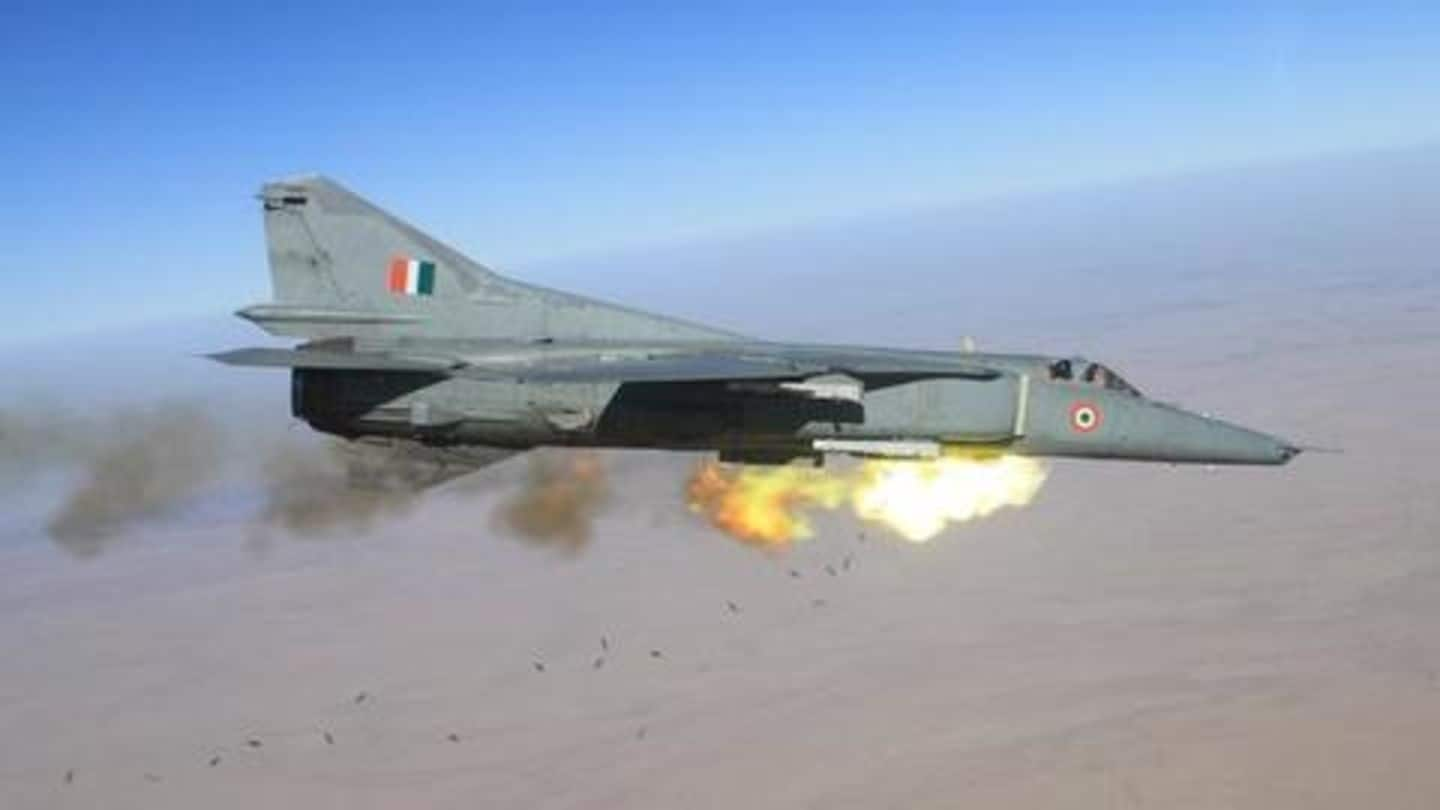
IAF's MiG-27 decommissioned: Revisiting the legacy of the fighter jet
What's the story
The Indian Air Force (IAF) on Friday bid adieu to the MiG-27 fighter aircraft as the jet's squadron took its last sortie in Jodhpur, Rajasthan. Seven aircrafts of the last Scorpion 29 squadron roared across Jodhpur's skies one last time, 35 years after the MiG-27 was first inducted into the IAF. Here are some interesting facts about the MiG-27.
Origins
MiG-27s first inducted into IAF in 1984
The MiG-27 finds its roots in Soviet Russia and is named after its makers: Artem Mikoyan (M) and Mikhail Gurevich (G). The 'i' stands for the word "and" in Russian. India started acquiring MiGs from the Soviet Union in the 1960s to upstage the F-104s Pakistan received from the United States. In 1984, IAF inducted seven squadrons (165 fighters) of MiG-27.
Design
MiG-27 known for its 'swing-wing' design
The MiG-27 is a single-engine ground-attack fighter, i.e., it is more suited for low-altitude flying and air-to-ground strikes. It was designed as an upgrade to the MiG-23. The jet is known for its swing-wing design allowing the plane to swing its wings between a 16°-72° angle, as per requirement. When swept back, the wings reduce wind resistance during supersonic flights.
Nicknames
'Bahadur' to 'Platypus': The fighter jet had many names
Due to the MiG's swing-wing design, pilots would call themselves "Swing Wingers." The aircraft had nicknames of its own. In the Indian Air Force, it was known as 'Bahadur' (valiant) and 'Balkon', because its cockpit offered a balcony-like enhanced view. The North Atlantic Treaty Organization (NATO) called it the 'Flogger' while Russian pilots called it 'Utkonos (platypus)' owing to the shape of its nose.
Kargil War
MiG-27 played important role in Kargil War
The MiG-27s successfully assisted in IAF's 'Operation Safed Sagar' during the 1999 Kargil War despite not being built for the high altitude. However, one MiG-27 was lost during the war as the aircraft experienced engine failure and the pilot, then-flight lieutenant K Nachiketa, ejected. He was captured by Pakistani forces and later released. The jets were also of service in Operation Parakram in 2001-02.
Accidents
Accidents soon became synonymous with MiG-27s
The engine failure during the Kargil War wasn't a one-off incident as the MiG-27s went on to become infamous for their routine engine failures. This year alone, 2 MiG-27s crashed: One in Rajasthan's Pokhran range on February 12 and a second near the state's Jodhpur city on March 31. Fortunately, in both cases, the pilots ejected safely and survived.
Decommission
Decision to phase out MiG-27s announced in 2015
In 2015, it was decided that the aging MiG-27s will be phased out over the next few years. Today, the remaining seven of the Scorpion 29 squadron took their last sortie in Jodhpur as they retired. All other nations have also grounded the dated aircraft, with Kazakhstan's Air Force being the only exception as it continues to fly the MiG-27s.